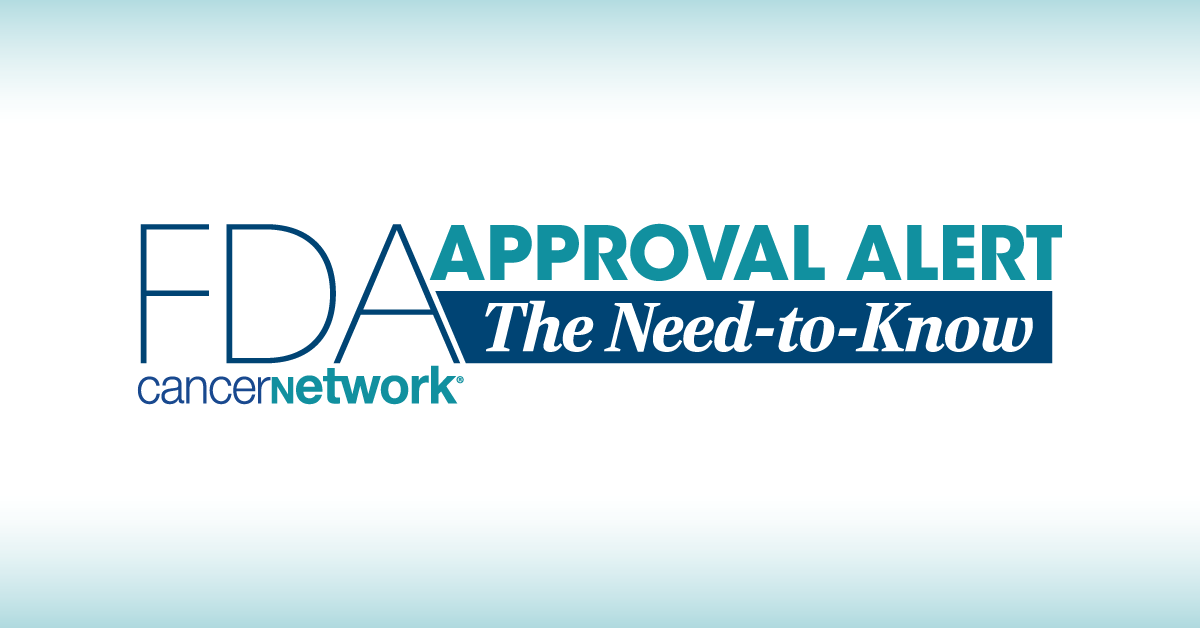FDA Approves Imlunestrant in ER+/HER2– ESR1+ Breast Cancer
Data from the phase 3 EMBER-3 trial support the approval of imlunestrant in this breast cancer population.
Supporting data for the approval came from the phase 3 EMBER-3 trial (NCT04975308) assessing imlunestrant monotherapy, investigator's choice of endocrine therapy, and imlunestrant plus abemaciclib for patients with estrogen receptor–positive, HER2-negative breast cancer.

The News
The FDA has approved imlunestrant (Inluriyo) as a treatment for patients with estrogen receptor (ER)–positive, HER2-negative, ESR1-mutated advanced breast cancer, according to a press release from Eli Lilly and Company.1
Supporting Data
The agency based its decision on findings from the phase 3 EMBER-3 trial (NCT04975308). In EMBER-3, investigators assessed imlunestrant monotherapy, endocrine therapy, and imlunestrant plus abemaciclib (Verzenio) among patients with ER-positive, HER2-negative, locally advanced or metastatic breast cancer that has progressed on or after aromatase inhibitor (AI)–based therapy with or without a CDK4/6 inhibitor. Investigators previously presented data from EMBER-3 at the 2024 San Antonio Breast Cancer Symposium (SABCS) and subsequently published them in the New England Journal of Medicine.2,3
Among patients with ESR1 mutations, the median progression-free survival (PFS) was 5.5 months (95% CI, 3.9-7.4) with imlunestrant monotherapy vs 3.8 months (95% CI, 3.7-5.5) with standard endocrine therapy (HR, 0.62; 95% CI, 0.46-0.82; P <.008). Additionally, the median PFS was 5.6 months (95% CI, 5.3-7.3) vs 5.5 months (95% CI, 4.6-5.6) in each respective arm across the overall population (HR, 0.87; 95% CI, 0.72-1.04; P = .12).
What are the Experts Saying?
"This represents an important advancement for patients with ESR1-mutated [metastatic breast cancer], a mutation found in nearly half of patients who have taken hormone therapies, often contributing to treatment resistance," principal study investigator Komal Jhaveri, M.D., FACP, FASCO, section head of Endocrine Therapy Research and clinical director of Early Drug Development at Memorial Sloan Kettering Cancer Center, stated in the press release.1 "With its demonstrated efficacy, tolerability profile and oral administration, this therapy provides a meaningful alternative treatment option for this patient population."
How Was EMBER-3 Designed?
In the open-label phase 3 EMBER-3 trial, 874 patients were randomly assigned to receive imlunestrant monotherapy (n = 331), investigator's choice of fulvestrant or exemestane (n = 330), or imlunestrant plus abemaciclib (n = 213). Investigators administered imlunestrant at 400 mg once daily and abemaciclib at 150 mg twice daily.
The trial's primary end points were investigator-assessed PFS for imlunestrant vs endocrine therapy in the ESR1 mutation, imlunestrant vs endocrine therapy among all patients, and imlunestrant/abemaciclib vs imlunestrant alone in all patients. Secondary end points included overall survival, overall response rate, and safety.
Patients 18 years and older with locally confirmed ER-positive, HER2-negative advanced breast and measurable disease per RECIST v1.1 guidelines were eligible for enrollment on the trial. Other eligibility criteria included having disease progression on an AI inhibitor in the neoadjuvant or adjuvant setting, within 12 months after adjuvant therapy, or while receiving frontline therapy for advanced disease. Those with visceral crisis, sympotmatic or untreated brain metastases, or inflammatory breast cancer were ineligible for study entry.
Safety Data
Most adverse effects (AEs) with imlunestrant were grade 1 or 2. The most common toxicities included laboratory abnormalities, calcium decreases, musculoskeletal pain, neutrophil decreases, aspartate aminotransferase increases, fatigue, and diarrhea.
Data showed that 4.6% of patients permanently discontinued study therapy following AEs. Additionally, 2.4% and 10% of patients required dose reductions and dose interruptions due to toxicity, respectively.
"The approval of [imlunestrant] expands the metastatic breast cancer treatment landscape for patients who test positive for the ESR1 mutation. Eligible patients will now have access to an additional treatment option, offering them the potential for flexibility in their daily lives and disease management, and—above all—renewed hope for the future," Jean Sachs, chief executive officer at Living Beyond Breast Cancer, concluded.1
References
- U.S. FDA approves Inluriyo (imlunestrant) for adults with ER+, HER2-, ESR1-mutated advanced or metastatic breast cancer. News release. Eli Lilly and Company. September 25, 2025. Accessed September 25, 2025. https://tinyurl.com/2fexwcem
- Jhaveri KL, Neven P, Casalnuovo ML, et al. Imlunestrant, an oral selective estrogen receptor degrader (SERD), as monotherapy and combined with abemaciclib, for patients with ER+, HER2- advanced breast cancer (ABC), pretreated with endocrine therapy (ET): results of the phase 3 EMBER-3 trial. Presented at: 2024 San Antonio Breast Cancer Symposium; December 10-14, 2024; San Antonio, TX. Abstract GS1-01.
- Jhaveri KL, Neven P, Casalnuovo ML, et al. Imlunestrant with or without abemaciclib in advanced breast cancer. N Engl J Med. Published online December 11, 2024. doi:10.1056/NEJMoa2410858